It’s the middle of June and you know what that means. A certain location on the French Riviera orders in the rosé, sets up shop and any marketer with a pulse and an expense account heads to Cannes and the Festival of Creativity.
After much navel-gazing and flagellation over the past year, Cannes has re-emerged apparently unchanged and as powerful and pointless as ever. The presentations remain the same dreary combination of purpose, creativity and disruption – just with bigger fonts. The conjoined dismissal of and desire for awards is as schizophrenic as ever. And the attendees remain the same too. Not since Rommel invaded North Africa in 1941 have so many pasty old white men been exposed to so much sunshine, so suddenly.
Quite remarkably, however, something positive has actually emerged from this years Festival. We have Keith Weed, Unilever’s CMO, to thank for a rare bit of practical sanity. He used the stage at Cannes on Monday to bemoan the current state of influencer marketing, which he believes is bedevilled by integrity and transparency issues. Weed called for a three-pronged approach to influencer marketing in which misleading engagement, dishonest practices and a lack of transparency need to be fixed. “We need to take urgent action now to rebuild trust before it’s gone forever,” he said.
Hmm. As usual, I find myself in violent agreement with Mr Weed while at the same time shaking my head at the abject unlikelihood that anything will come of it. Yes, Unilever does possess influence, but the idea that it can somehow police the world of influencer marketing into being more legitimate seems fundamentally flawed from the outset.
The whole premise of influencer marketing is, if you think about it, dodgy. I certainly think it might have a place in the tactical toolkit for many brands – dodginess has never been a disqualifier for marketing investment after all.
But let’s not pretend that influencer marketing has anywhere near enough legitimacy or transparency to defend itself against Weed’s criticisms. And let’s not point to ‘a few bad apples’ and pretend most influencer marketing is valid with a couple of cowboy operations letting the side down. The whole approach has that sneaky, sticky feeling of just not being quite right.
You’ve seen as many influencer marketing presentations as I have. Someone young, perky and sockless bounces onto stage with the kind of vigour only possible (trust me) from a pie-free existence. They then show a lot of photos of young, equally perky and similarly pieless people posing for selfies and wearing shades and looking at themselves in mirrors.
Next comes a big dump of entirely specious data points supporting the power and impact of influencer marketing that are plucked from completely bogus samples by companies that sell influencer marketing. You know the kind of stuff: 70% of millennials are influenced by influencers but only 5% are influenced by newspaper ads (Medium); 75% of marketers are using influencer marketing (AdWeek); 30% of pet owners follow famous animals on social media (Mars Petcare).
Clearly, all of these stats and the other 8,000 made-up figures about influencer marketing are a load of bollocks (source: Marketing Week), but that does not stop the perky presenter rattling them off as part of their presentation with the certainty of a modern-day Moses. So far, it’s all looking super-authentic and incredibly transparent, what with the pictures of people smiling and jumping up in the air and being all aspirational and stuff.
If we have learned anything about digital it’s that evidence of malpractice and fraud has absolutely zero influence on the prevailing levels of investment.
At some point the presenter throws some shade over ‘traditional’ methods like TV advertising (“boo”, shouts the audience) and newspapers (“fuckers”), and their old-fashioned commercial approach to promoting brands.
Then we get to the last bit, or the ‘money shot’, as I believe influence marketers refer to it. That’s the moment when our presenter drops the ‘organic’ façade and says: “You can hire as many of our influencers as you want and they will basically say what you want them to and then you pay us and here’s our website and you’re welcome. Call me.”
And big brands have certainly done just that over the last five years. While the whole idea of organic social media marketing has been exposed as almost total wank, influencer marketing has somehow dodged the credibility cull. Like the crocodile, soldiering on while the rest of the dinosaurs disappeared into dust, influencer marketing survived the noughties and continues to attract a host of brands to its quasi-authentic offer.
Perhaps brands want to keep buying into the myth of social media marketing? Maybe they just need to drive traffic to their existing social infrastructure? Maybe they actually fall for the fake stats and perky presentations? Maybe it works?
Whatever the reason, the events at Cannes over the past few days suggest the game might be in for a bit of a shake-up. Or perhaps not. It’s one thing for brands to work out that influencer marketing is mostly a scam but quite another to stop investing marketing budgets in it. If we have learned anything over the past decade about digital it’s that evidence of malpractice and fraud has absolutely zero influence on the prevailing levels of investment that a platform subsequently receives.
Keith Weed can ask for as much transparency as he wants; the problem with influencer marketing is axiomatic. Which is a $2,000 way of saying that its fucked from the outset but that this won’t stop brands spending money on it regardless.
Specifically, there are three contiguous, ever-decreasing circles of bullshit surrounding all influencer marketing. Let’s break them down one by one and reveal the fundamental issues that all brands should be aware of before they start paying Mr Sixpack and Ms Perky to start pumping their products.
The First Circle of Bullshit: Are the followers real?
It will come as no surprise to seasoned marketers that the first challenge of influencer marketing is working out just how many of your influencers’ circle of friends actually exist. In space, no one can hear you scream; in social media, no one knows if your audience is half a million receptive eyeballs or a mainframe north of Shenzhen run by a man with a limp called Abdul.
Whether your chosen influencer operates via Twitter, Instagram or any one of the many platforms susceptible to influence, there are always going to be questions about fake followers.
Of course, there has been a long and undistinguished history of people and brands buying and creating fake followers to pad out their social media metrics. Facebook is currently removing around 200 million fake profiles from its platform every month. That’s the population of the UK being deleted every ten days. That statistic is astonishing, but more incredible is the general acceptance from marketers that this is entirely normal and business as usual. But things take a distinctly more serious turn when an influencer buys fake followers and then sells their services on the basis of how many people follow them online.
There is a word for that kind of activity in digital media. It’s called fraud.
But that fact has clearly not prevented many influencers buying fake followers anyway. A recent survey from Hypetap of 10,000 influencers identified 16% of the total follower base to be fake. But that figure is almost certainly an underestimate. One study from Points North in 2017 concluded that big brands such as P&G’s Pampers (32%), Unilever’s Magnum (20%), L’Occitane (39%) and the Ritz-Carlton hotel group (78%) were among the brands whose Instagram sponsored posts had the most fake followers.
Even these numbers might be undercooked. As Digiday reported last year, Instagram posts tagged with either #sponsored or #ad generated more than 50% of their engagement from fake profiles and of the 118,007 comments posted, 97,065 were generated by bots.
In my own research for this article, as you will see below, the influencers that did agree to take part in my experiment averaged 40% fake or lapsed followers. That’s a key caveat by the way – it’s not always fraud that inflates an influencer’s reach, it’s often followers simply moving on without shutting things down.
Either way, this is a significant proportion. Let’s take that number and assume that around 40% of the average influencer’s effort falls on fake ears or on those now long departed from the platform. That already knocks out almost half of a brand’s budget but, in fairness to influence marketers, that is a ratio most big brands should not only accept but feel pretty positive about.
With many marketers estimating that non-viewability rates for their Facebook video ads are as high as 70% and the Pew Research Centre claiming that two thirds of tweeted links to popular websites come from bots not beings, a fraud rate of 40% would be a high-water mark for digital media. Something to be proud of.
Unfortunately, it’s only the first hurdle. We’ve lost 40% of our influence as we cross into the next Circle of Bullshit.
The Second Circle of Bullshit: Are influencers trusted?
I know what you are thinking: isn’t the ‘trusted’ circle the same as the ‘real’ circle? No. In social media land you have to first establish if someone is human and then, and this is the tricky bit, work out if their message is genuine enough to result in believability. The fact that an influencer is messaging a fellow human does not mean that their message is automatically perceived to be genuine. How many of the followers actually believe what their influencer is telling them about products and services?
This is a far trickier test than assessing the First Circle and its non-human traffic. Many of influence marketing’s claims centre on the authenticity of the message and the seamless manner in which content and advertising merge together to create audience trust. A much-used quote in the influencer marketing world is Seth Godin’s comment: “What are you most likely to pay attention to – the person or organisation you know and trust, or person or brand trying to sell you something?”
The insinuation is that rather than traditional advertising, with its overt attempt at selling, influencer marketing provides a more natural and subtle messaging platform. Unilever tells me in a TV ad that its new Magnum ice cream bar is amazing and I shrug. Supertaste451 posts a picture of herself eating it, looking fabulous and commenting “this is amazing”, and I am going to be impressed. Perhaps even influenced.
The personal, authentic power of influence marketing does make sense, provided, of course, that Supertaste451 is perceived to be genuine by her many followers. But if she has spent the last 12 months taking anyone’s silver to say pretty much anything about anything, while there is a significant chance that her audience might continue to follow her they won’t necessarily believe what she is telling them.
In a recent survey by social analytics firm Shareable, only 37% of adults aged 25 to 34 and 55% of those aged 18 to 24 agreed that they trusted what influencers on social media told them. A similar study that examined influencers found similar levels of distrust on the sender’s side too. Advertising agency Carmichael Lynch found that 23% of influencers admitted they did not feel authentic about the brand-sponsored content they were paid to post and 15% said they did not even like – let alone genuinely recommend – the brand doing they posted about.
Those are pretty drastic numbers and I wanted to test the degree to which influencers are capable of recommending or posting literally anything for money. I found a firm that sells influencer marketing called Shoutcart, based in Portland, Oregon. The online agency offers global access to micro-influencers (those operating with less than 100,000 followers).
Micro-influencers are held up as better value and more authentic by many influencer marketers, so they were an ideal sample to test. They are also a lot cheaper to hire and as I was playing with my own money this was a big advantage – a bit like running genetic experiments on fruit flies rather than marmosets.
Next, I selected my influencers from Shoutcart’s user-friendly list. I wanted broad reach but also a range of cost levels. So, in the end, I selected 30 suitably impressive influencers who each claimed between 10,000 and 100,000 followers. I was looking for the lowest possible form of influence – a single post on their Instagram accounts – and for that service, my influencers charged between $1 and $40 (£30).
That’s at the very low end of the scale. The average micro-influencer charges closer to £200 per sponsored message and big hitters with more than 500,000 followers can ask for up to £3,000 per post. Selena Gomez, the “queen of the influencers” is rumoured to ask in excess of £400,000. Rosanna Pansino (me neither) demands millions apparently.
I gave my new influencer army a very tight deadline and asked for my post to occur within 12 hours. Not surprisingly, a significant number of my influencers – 12 of them – simply did not see my request in time. But that still left me with a (highly unrepresentative) sample of 18 influencers who did receive my request.
How many of these 18 influencers really had the source credibility to deliver messages that were authentic and in line with their audience interests and their own genuine outlook? And how many were happy to post any old crap for money and had probably lost all audience trust months ago? For this I needed to find something so ridiculous, so esoteric, that only a total sell-out would take the dollar and post it to their followers.
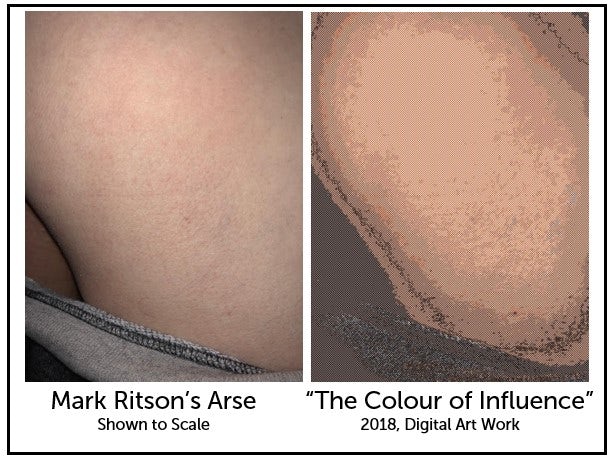
I decided that the best option would be to take a picture of my arse (obviously) and ask my 18 newly recruited influencers to post it on their Instagram feeds with a complementary comment. I took the photo (shown above in all its glory) and then pixelated it using a graphics program from 1996. The resulting image was then titled ‘The Colour of Influence’ and I asked my new-found influencer army to proclaim it “amazing” or “my best work ever”.
How many of the influencers would lower themselves to that standard within the 12-hour time limit I set them? How many would refuse the commission and prove themselves trustworthy and credible? Would my bottom become a new social media sensation that would propel me to global arse-driven fame? A Kardashian, if you will, for the marketing industry. In just 12 hours’ time I would find out.
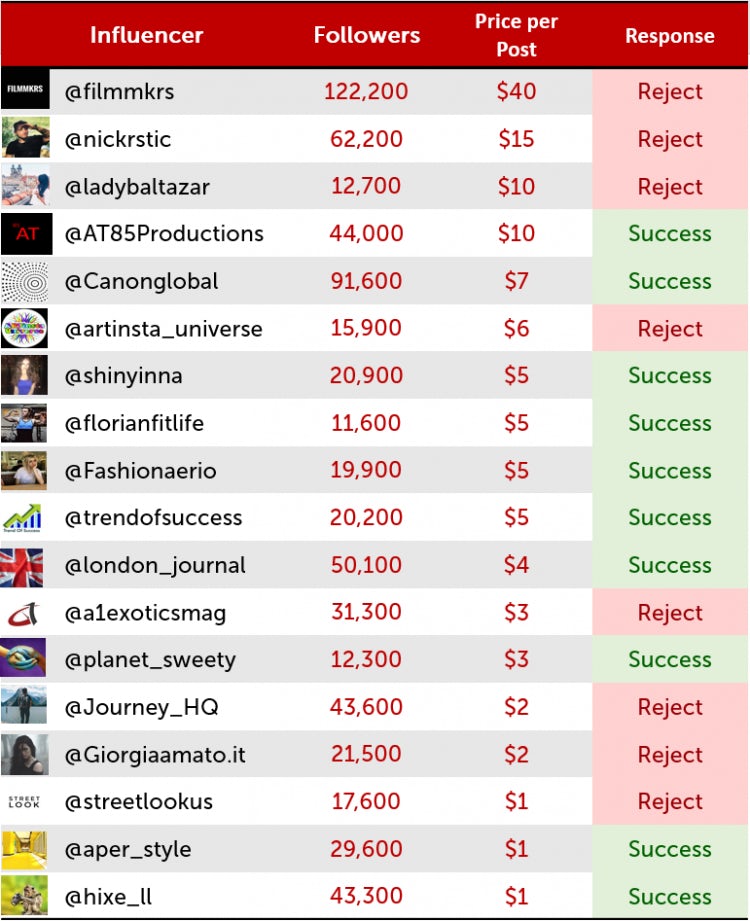
In the end, of the 18 influencers who considered my proposal, 10 (56%) took the money and posted a giant picture of my arse to their Instagram followers while proclaiming it to be a work of staggering genius. The other eight (45%) rejected my indecent proposal. You can read this outcome either way. On the one hand it should be deeply troubling that a marketing medium that positions itself on authenticity and credibility is dominated by influencers who will literally post anything and say anything you ask of them. On the other, I am quietly impressed that 45% of the influencers rejected the proposal and preserved their digital dignity – and, one would assume, their influence too.
Again, this is nowhere near the sample needed to make any enduring conclusions, but the results of my experiment and the fact that 45% of the sample refused to participate in it aligns with the bigger and broader studies of influencer trust. The survey of 1,200 American consumers last year by Shareable concluded that, in total, 38% of followers trusted what influencers told them.
Let’s take that number as our measure for the Second Circle of Bullshit and apply that 38% trust threshold across our messaging. We lost 40% of our audience in the First Circle, but of the 60% of human audience members remaining, only 38% will trust the messages emanating from our influencer.
The Final Circle of Bullshit: Do they have influence?
Having got this far, one might be forgiven for thinking influence is at hand. But just because the person following you is human and trusts you does not mean they will be influenced by you. To make that assumption would be to jettison a century’s worth of mass communications research, consumer behaviour studies and a significant bit of behavioural economics to boot. I might trust you but are you really able to influence my thinking and ultimately my behaviour?
My father, the inimitable Eric B Ritson, is certainly a real person (at least for the first two pints) and is a man I trust. But I would say that approximately 96% of his attempts to influence my thinking during my adult life on topics as diverse as football, food, women, weather, Germans and pretty much every other topic known to humanity have ended in abject failure. Trust is not influence.
Which prompts the rather uncomfortable thought that influencer marketing might suffer from the not-insignificant titular problem of being totally full of shit. Are any of these influencers actually influencing anyone? Read any the guff out there on influencer marketing from its industry’s biggest ‘experts’ and it’s clear that most of them continually, and perhaps deliberately, confuse sending messages with impact and influence.
For once – and I will make this brief – I side with Facebook; specifically, their rather splendid head of agencies in Asia Pacific, Neil Stewart.
He recently found himself on a conference stage in Singapore next to a much-touted influencer and made a brilliant request: “Can I just ask that we don’t keep using the word ‘influencer’? Because there’s an assumption that they have influence. To be an influencer,” Stewart continued, “you must have influenced something. I don’t necessarily think that’s true for a lot of influencers.
“There are plenty of influencers who have friends, followers; they have a blog and people who see their content. But until you can prove that they have influenced – so changed behaviour, an attitude or an action – I think we could almost sue them for using a false or misleading description.”
Challenged by the moderator of the session (herself an influencer of some note) to provide a replacement term, Stewart suggested, without even a pause, “Z-list celebrities”.
Just as my arse is clearly something, so is influencer marketing. It’s just not what it is cracked up to be.
He has a point, does he not? Exposure, even from a trusted source is hardly behaviour change. What proportion of these trusted messages actually result in impact? This is, perhaps, the most important and most difficult ratio to assess. While most influence marketers are quick to claim their title, almost all of them make the mistake of using follower numbers or views as a proxy for their influence.
Again, let’s be clear that getting a message seen by a target audience is no mean feat and its certainly something of value. But calling it ‘influence’ and the person behind the message an ‘influencer’ is a bit like my earlier attempt to reframe my big, hairy, Cumbrian arse as some kind of work of art. Just as my arse is clearly something, so is influencer marketing. It’s just not what it is cracked up to be.
The best information we can use as a proxy to assess the impact of influence marketing is probably just good old-fashioned click-through rates (CTR). If an influencer posts a link to her followers, how many can she influence enough to actually click on the link? The answer from a number of studies, including the ones published by Hubspot, appears to be about 2%. The average influencer appears to be able to get 2% of their followers to do what they ask of them in any one situation. If we transpose that data to the real audience, we arrive at our final destination.
The centre of the Three Circles
Bringing all these numbers together gives us a final measure of the influence that influencer marketing might have. Let us assume an influencer claims 10,000 followers and charges £250 per post on Instagram. How do the numbers stack up?
First, we have to subtract the likely 4,000 followers from the First Circle of Bullshit who have stopped checking their Instagram account or never existed in the first place.
Of those 6,000 remaining followers, we must now subtract something that has nothing to do with influencer marketing and everything to do with the platforms they utilise. Not every post sent is seen by its designated target. In fact, the majority are usually ignored. The best estimates for the average Instagram user in 2018 suggest that they see only around 30% of their posts, and it’s significantly less for Twitter.
So of the 6,000 actual followers only 1,800 will see the post in question. Of course, our influencer could send multiple posts but we will be paying for that privilege so let’s keep it as a single post for this example.
Next, we need to apply the Second Circle of Bullshit and assume that only 38% of these posts are actually trusted enough to have any impact on the target consumer, taking us down to 684 received and believed messages.
And thanks to the Third Circle of Bullshit we can estimate that actual influence exists at the 2% level of received and trusted messages. That would deliver fourteen influenced people from the original 10,000 followers. A football team’s worth.
By the miserable standards of modern media, if someone charged me £250 to influence 10,000 followers and I ended up getting 14 of them to click on my promoted link or consider a new diet drink, I’d probably be very happy. Other marketers might disagree.
But the whole premise of influencer marketing still feels dodgy to me. Calling this ‘influence’ when 99.86% of the target market experience no such response is troubling for a start. Then there is the blatant and fraudulent buying of fake followers and passing off those fakes for financial gain, also clouding the reputation of influencer marketing. Keith Weed is right to call that out.
But most of all there is that sticky feeling that the whole influencer marketing thing is just a little bit too underhand, even by the already lower-than-low standards of contemporary marketing. Is influencer marketing editorial or promotion? Is it advocacy or advertising? Digital marketing or social media? The lines that we have tried to keep dinstinct for all these decades seem so blurred they disappear almost completely. Perhaps that is the strength of influencer marketing – and also what repels me.
I guess my perspective on all of this is also contingent on my own Three Circles of Bullshit being applied to this bit of content too. Are you, dear reader, human? Did you actually see this column and make it to the end? Do you trust me? And does my case, built from flimsy data and a giant pixellated image of my bottom, influence your way of thinking?
Or have I just made a massive arse of myself?



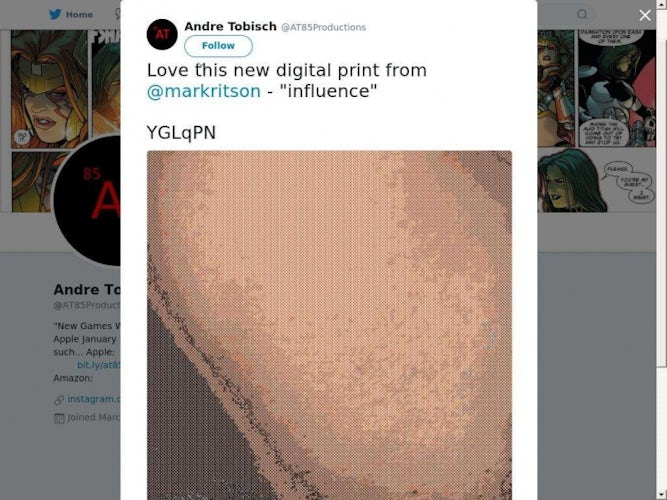
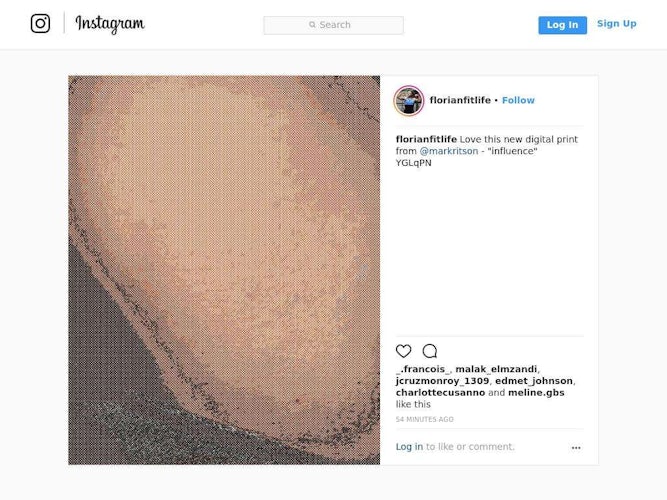
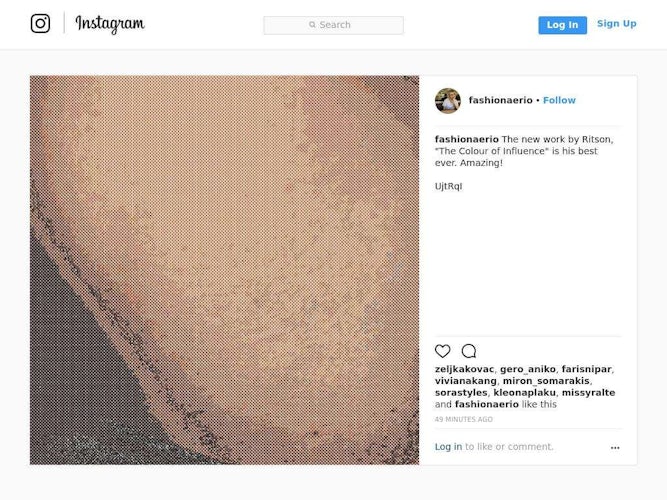
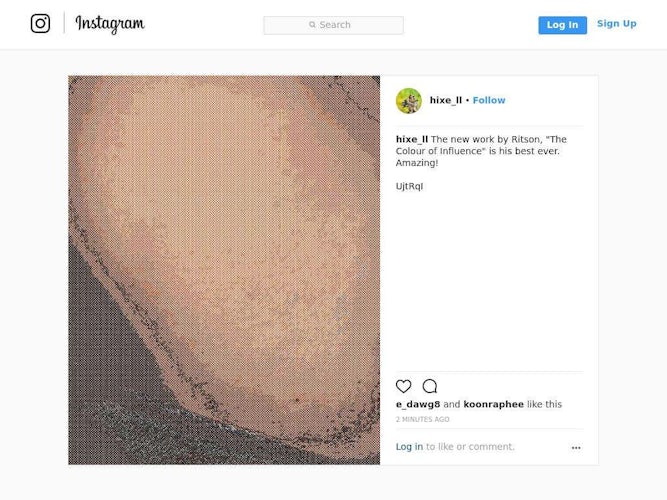
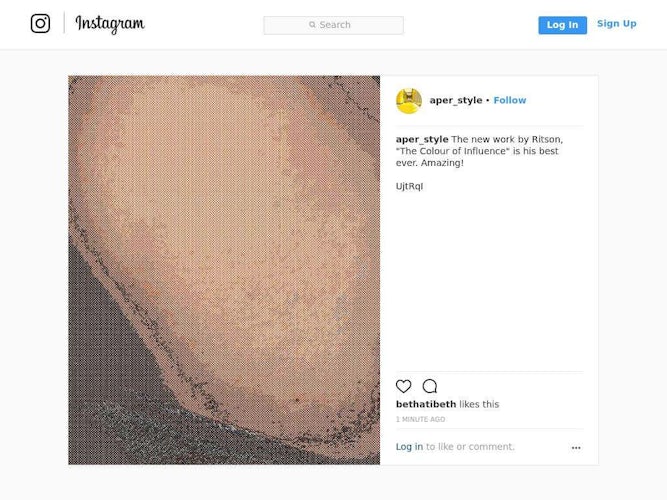
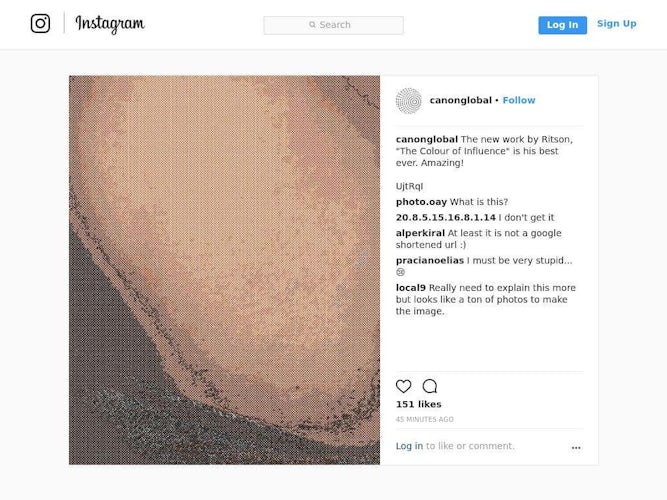

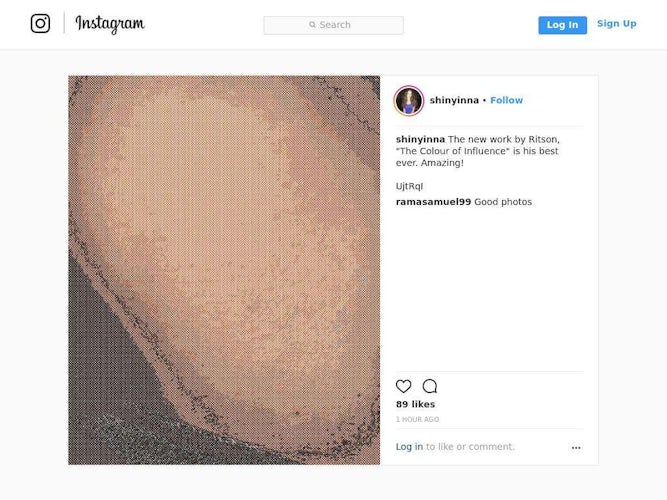

 Versión PDF
Versión PDF






